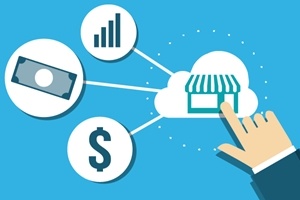Sometimes, an old machine or piece of software can still get the job done. For instance, investors and other finance professionals on Wall Street have depended for decades on the Bloomberg Terminal, a proprietary box that made its debut all the way back in 1982. Likewise, George R.R. Martin has written all books in the "A Song of Ice and Fire" series using WordStar 4.0, a classic word processing application that he faithfully runs on a vintage DOS computer, according to TechCrunch. If nothing else, banking on a DOS-based PC allows for some freedom from the constant pings of email, instant messaging and the rest of the Internet while writing.
But there are plenty of other cases in which what worked best (technologically, at least) in the 1980s is far from being the ideal fit in 2015. PCs and mobile phones - unrecognizably thin and speedy compared with their "Wall Street"-era predecessors - are prime examples. There is also the more subtle case of applications and services from 25-plus years ago that have been continually updated and refined, but nevertheless show their age when forced to deal with today's data deluge. Microsoft Excel and desktop accounting software in particular come to mind.
Why SMBs need a fresh approach to enterprise resource planning and accounting
Notions of "the cloud" have existed for years under different names, including the "thin client" terminology that was often applied to specific Unix-based platforms as well as Microsoft Windows systems in the 1980s and 1990s. Now that cloud has become an almost ubiquitous word within discussions of business technology (as well as a more widely well-understood technical concept), the "how" of remaking an SMB's core financial applications is clear. What's less obvious is "why" a company would leave behind trusted tools for something new.
"What are the tell-tale signs that a cloud transition might be merited?"
Undoubtedly, many firms face a seemingly tough decision in justifying leaving behind on-premises infrastructure and years-old programs for software-as-a-service solutions. A 2015 survey of 930 IT professional by RightScale found that while the vast majority (88 percent) of respondents were using public cloud, 68 percent of them were running less than one-fifth of their application portfolios there. Risk, security and cost are often cited as obstacles to switching to cloud-based IT, but the price of sticking to the aging status quo can be even steeper.
More specifically, there are several readily identifiable signs that a cloud conversion might be just what is needed for most cost-effective accounting, budgeting and forecasting:
- Regularly spending hours pulling transactions from accounts and moving relevant data between apps like Excel and Dynamics GP takes up tons of time. It also increases the chance of error due to over-reliance on manual processes such as repetitive data entry and duplication.
- Like an old car, traditional software can require a ton of tweaks, tricks and other customizations just to ensure that it continues to work from one day to the next. These adjustments aren't free or even low-cost, as Professional Testing found out from more than a decade of using NetSuite.
- Overall, ERP systems are known for such high costs and delays. IT research firm Gartner has even estimated that 75 percent of all ERP projects fail to meet their objectives. It also has predicted that heavily customized ERP will soon be viewed as "legacy" tech due to the benefits increasingly available through the cloud.
Complicated data operations, long wait times when closing books each month, siloed information and costly maintenance: These are all symptoms of underlying inefficiency across an SMB's financial software implementations. Fortunately, the growing number of cloud options, both inside and outside finance, dramatically heighten the contrast between the brittleness of old tools and the flexibility of newer ones.
Short- and long-term effects of making the cloud leap
Consider consulting for a minute. The associated costs may not seem that unusual in the moment, when a team comes in to help build or tweak an app and then leaves. These expenses can pile up, though, as consultants repeatedly have to put band?-aids on a fundamentally problematic, manually maintained ERP system.
SaaS applications are lightweight and highly automated by their nature- from how they are updated to how the underlying infrastructure is managed by the service provider. Implementing them immediately offers relief and a change of pace from traditional IT and frequent consultant-led fixes. Over the long term, this new paradigm for budgeting and forecasting software can reduce consulting fees by tens of thousands of dollars each year. Professional Testing saved $50,000 on consulting by switching to Intacct, for example.
This long-term benefit opens up several others:
- The saved money can be put toward hiring skilled personnel or integrating other pieces of cloud software (e.g., for customer relationship management) that help the ERP implementation continue to work more like a well-oiled and always-up-to-date machine. Old tools no longer hit you with the double-whammy of inefficient design and considerable expense.
- As the business grows, so does the ERP infrastructure. Getting extra capacity from your cloud-based applications for additional users and workloads can be done entirely in software - the grind of regular hardware upgrades and fresh licensing can be dispensed with. Security and feature updates also become second nature, being carried out automatically in most cases.
- Ultimately, financial software becomes a competitive asset for your business rather than just a simple enabler (and an ineffective one at that) of data processing. Automation is a big reason why: Tasks that in the past would have slowed the company to a halt due to all the required duplication can now often be done with the simple push of a button.
Discussion of cloud software often gets bogged down in tossing around technical terms like "self-service" and "pooled IT resources." But in examining the possibilities above, we can now see how these words might take the form of tangible benefits within everyday workflows. Ultimately, team members gain the ability to get dependable performance from financial software, whenever and wherever they need it.

Cloud software brings fresh efficiency to old financial processes.
Being able to press a button and then have expenses applied to specific accounts, or being able to count on your vendor's data center to seamlessly support your growing mass of workloads: That's what the cloud can do for SMBs. Organizations such as the Missouri State Teacher's Association have successfully made the switch from platforms such as Dynamics GP to alternatives such as Intacct, modernizing their processes while saving money along the way (the MSTA reduced its annual headcount costs by up to $50,000). While inertia can make it hard to move away from legacy financial software, sometimes a transition cannot afford to wait.




